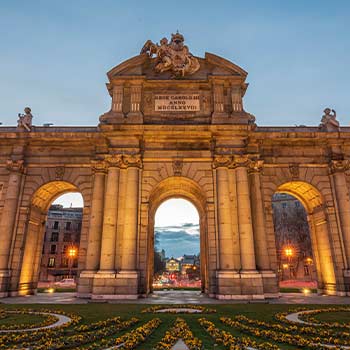Organizational Design
History, Politics & International Studies Program
Madrid, Spain
Dates: 8/26/24 - 12/21/24

Organizational Design
OVERVIEW
CEA CAPA Partner Institution: Universidad Carlos III de Madrid
Location: Madrid, Spain
Primary Subject Area: Management
Other Subject Area: Business
Instruction in: English
Course Code: 13176
Transcript Source: Partner Institution
Course Details: Level 300, 400
Recommended Semester Credits: 3
Contact Hours: 42
DESCRIPTION
PART I: INTRODUCTION
1. Organizations as field of study
1.1. The Classical theories: Taylor and Fayol
1.2. The Human Relations School
1.3. The contingency approach
1.4. The modern organizational theories
2. The business management
2.1. The management process
2.2. The Manager's job
2.3. The organizational design as a manager role
PART II: ORGANIZATIONAL STRUCTURE
3. The organizations as coordination mechanisms
3.1. Introduction
3.2. The coordination mechanisms
3.3. The basic parts of the organization
4. The design of the microstructure: the job
4.1. Two-factor theory of human motivation (Herzberg's motivation-hygiene theory)
4.2. Scope and content of a job
4.3. The Taylor's intervention on the content of jobs: specialization
4.4. The redesign of jobs, rotation, enlargement and enrichment
4.5. The semi-autonomous groups of production
5. The design of organizational units: Departments
5.1. Basis for Decentralization
5.2. Criteria for assigning activities to departments
5.3. Types of departmentalization in different parts of the organization
5.4. Coordination units: commissions
5.5. Structural coordination: matrix design
PART III: CONTEXT, ORGANIZATIONAL STRATEGY AND STRUCTURE
6. The influence of contextual factors
6.1. Universalist theories versus contingency theories of organizational design
6.2. Age and size
6.3. Technology
6.4. Environment
7. Organizational strategy
7.1. Tall structures vs. flat structures
7.2. Centralization and decentralization
7.2.1. The delegation of authority
7.2.2. Outcomes of centralization or decentralization
7.3. Structural Formalization: degree of bureaucratization
7.4. Vertical integration
7.5. Divisional Structure
1. Organizations as field of study
1.1. The Classical theories: Taylor and Fayol
1.2. The Human Relations School
1.3. The contingency approach
1.4. The modern organizational theories
2. The business management
2.1. The management process
2.2. The Manager's job
2.3. The organizational design as a manager role
PART II: ORGANIZATIONAL STRUCTURE
3. The organizations as coordination mechanisms
3.1. Introduction
3.2. The coordination mechanisms
3.3. The basic parts of the organization
4. The design of the microstructure: the job
4.1. Two-factor theory of human motivation (Herzberg's motivation-hygiene theory)
4.2. Scope and content of a job
4.3. The Taylor's intervention on the content of jobs: specialization
4.4. The redesign of jobs, rotation, enlargement and enrichment
4.5. The semi-autonomous groups of production
5. The design of organizational units: Departments
5.1. Basis for Decentralization
5.2. Criteria for assigning activities to departments
5.3. Types of departmentalization in different parts of the organization
5.4. Coordination units: commissions
5.5. Structural coordination: matrix design
PART III: CONTEXT, ORGANIZATIONAL STRATEGY AND STRUCTURE
6. The influence of contextual factors
6.1. Universalist theories versus contingency theories of organizational design
6.2. Age and size
6.3. Technology
6.4. Environment
7. Organizational strategy
7.1. Tall structures vs. flat structures
7.2. Centralization and decentralization
7.2.1. The delegation of authority
7.2.2. Outcomes of centralization or decentralization
7.3. Structural Formalization: degree of bureaucratization
7.4. Vertical integration
7.5. Divisional Structure






